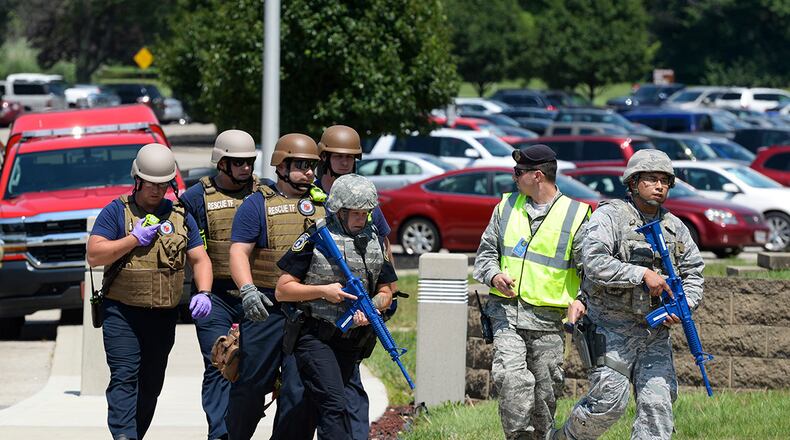“Wright-Patt Security Forces, Fire Department and medical will respond,” Freund said, adding that everyone on the installation should take immediate action and treat the mock scenario as a real-world occurrence.
Those in immediate proximity to the “active shooter” should follow the “run, hide and, as a last resort, fight” response model, Freund said. Meanwhile, personnel and residents on both Areas A and B should go into lockdown mode or find a place of concealment and remain until the “all-clear” signal is given.
“Active-shooter incidents can happen very quickly,” Freund said. “Exercises and being prepared to take appropriate actions can save lives.”
The Installation Command Center will issue notifications via “Giant Voice” and other communication modes that the entire installation is being locked down.
Base officials remind individuals on or around WPAFB not to call 911 during the exercise. Emergency-response agencies and dispatch centers from nearby communities, which would also respond during a real-world incident, have been notified about the active-shooter exercise.
“This is an exercise, a training event,” Freund said. “We don’t want off-base police or firefighters to respond to the base.”
Wing inspection team members will evaluate exercise response throughout the entire installation. They will be marked with badges and vests.
The response phase goes from 9 to around 10:30 a.m. While much of the base will be done with the exercise at that time, activities will continue at the scene.
“Afterward, it turns into a recovery operation,” Freund said. “The rest of the installation will go back to normal operations. Only Bldg. 1235 will be affected by the recovery part of it.”
Organizations working directly in “recovery” efforts, such as the Emergency Operations Center, will be among those involved, he added.
Bldg. 1235 is in close proximity to the Kittyhawk Express shoppette and along a route used by many to access the commissary and Base Exchange. Drivers in the area are reminded to be observant, exercise caution, follow all traffic-control signs or directions, and be prepared to detour as instructed.
“We are not trying to surprise anybody,” Freund said of ensuring all are aware of the exercise.
Planners say active-shooter training should be reviewed in advance so personnel know exactly what steps they should take if a real-world event occurs. Work centers near Bldg. 1235 should also review continuity of operations plans in case there is a need to operate from an alternate location.
Other potential exercise impacts include:
* Gate traffic could be backed up or rerouted to other entry-control points if a gate is closed.
* Emergency-response vehicles will be moving around the base.
* Travel congestion.
* Some roadways may be temporarily blocked.
* Increased security measures.
* “Giant Voice” activation.
* Use of telephone and electronic notification methods.
* Alert sirens.
Surrounding communities may hear the sirens or “Giant Voice” and are advised it is part of the training exercise, unless otherwise notified.
About the Author
